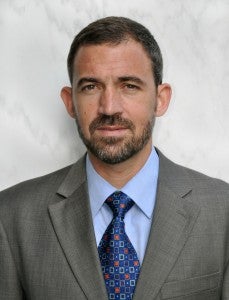 Throughout 2012, EDF’s Energy Innovation Series will highlight more than 20 innovations across a broad range of energy categories, including smart grid and renewable energy technologies, energy efficiency financing, and progressive utilities, to name a few. This series will demonstrate that cost-effective, clean energy solutions are available now and imperative to lowering our dependence on fossil fuels.
Throughout 2012, EDF’s Energy Innovation Series will highlight more than 20 innovations across a broad range of energy categories, including smart grid and renewable energy technologies, energy efficiency financing, and progressive utilities, to name a few. This series will demonstrate that cost-effective, clean energy solutions are available now and imperative to lowering our dependence on fossil fuels.
For more information on this featured innovation, please view this video on solar financing for SolarCity’s project SolarStrong.
Project SolarStrong by SolarCity is not only expected to be the largest residential solar photovoltaic (PV) project in American history if completed, but will also be a groundbreaking milestone for solar financing in the United States.
In November 2011, SolarCity – along with Bank of America and Merrill Lynch – announced Project Solar Strong, an ambitious five-year plan to build more than $1 billion in solar projects for privatized U.S. military housing communities across the country. SolarCity partners with leading privatized military housing developers to install, own and operate rooftop solar installations and provide solar electricity at a lower cost than utility-provided power. SolarStrong is expected to create up to 300 megawatts of solar generation capacity that could power up to 120,000 military homes if completed.
This project will allow privatized military housing developers to save money on energy costs that can be reallocated toward quality-of-life improvements and enhanced services for military families. SolarStrong will also help the Department of Defense (DOD)—the single-largest energy consumer in the U.S.—secure more of its energy needs from renewable sources operated in parallel with the utility grid.
SolarStrong is expected to create thousands of full-time and temporary jobs; SolarCity hopes to provide many of these jobs to U.S. veterans and military family members, which have been among those hardest hit by the economic downturn. SolarStrong is a groundbreaking innovation that demonstrates the long term viability of distributed solar generation and the potential for creative financing structures to significantly grow residential solar in the U.S..
SolarStrong’s original plan to secure a loan guarantee from the U.S. Department of Energy (DOE) did not come to fruition, but the project was fortunately able to launch without being part of the loan guarantee program. Aggressive, creative projects that confirm the viability of alternative financing structures, such as SolarCity’s SolarStrong, are paving the way to making affordable clean energy available on a significantly larger scale.


